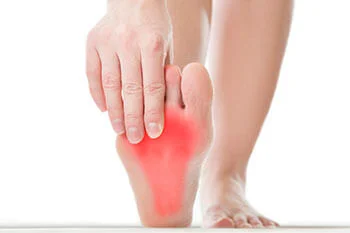Table of Contents
Introduction
Like anything in this world, too much of a good thing is generally bad. This is so true in the high arched foot. Having high arches can lead to:
- Chronic ankle sprains and ankle instability
- Achilles tendon problems
- Ankle joint bone spurs
- Ball of foot pain (sesamoiditis)
- Chronic back pain
What causes a high arches?
Generally, most people are born with a cavus foot although it can develop with time. If the arch height is increasing and the foot appears to be shortening, then there may be an underlying neurological condition causing the muscles to tighten and effect the foot position.
Will it get worse?
What are the common symptoms?
- High arch
- Pain / discomfort in the foot, leg or back
- Associated deformities (e.g. hammertoes, retracted toes)
- Corn / callous formation particularly on the ball of the foot or toes
- Difficulty in shoes
- Difficulty in walking
- Stiffness in the foot
- A tendency to ankle sprains / lateral instability
How is it recognized?
What can I do to reduce the pain?
There are several things that you can do to try and relieve your symptoms:
- Wear good fitting shoes with a deep toe box
- Perform exercises to keep the muscles flexible and strong
- Avoid high heels
- Wear a pad over any prominent deformities
- See a podiatrist
What will a podiatric specialist do?
If simple measures do not reduce your symptoms, there are other options:
- Advise appropriate shoes
- Advise exercises
- Consider prescribing Custom Orthotics
- Consider prescribing a custom made ankle foot orthotic
- Advise on surgery
The way in which your foot loads during walking can place increased stress on the muscles, bones and joints and this can be controlled by special shoe inserts (orthotics). Whilst these are unlikely to resolve established deformity they may help reduce discomfort. Severe cases may need an ankle foot orthosis.
Will this cure the problem?
What will happen if I leave this alone?
How can I cure the deformity?
What to Do Next?
If you or someone you know is experiencing arch pain, seek out the help of a podiatrist for a proper diagnosis and treatment regime.
Contact us today to schedule an appointment.


